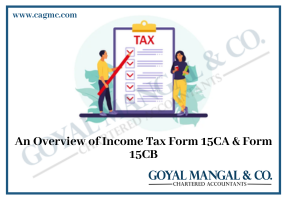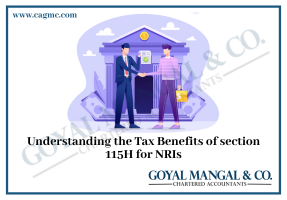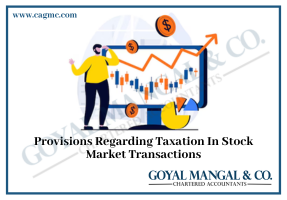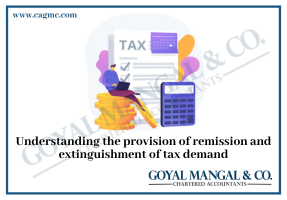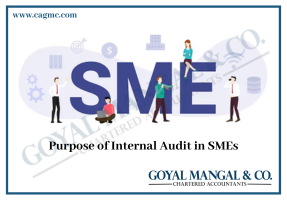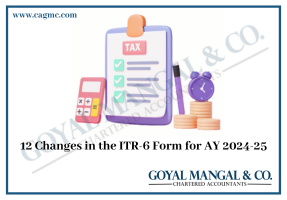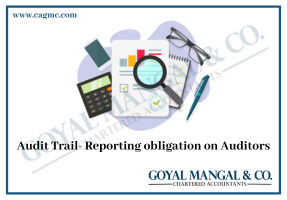
One of the critical aspects of taxation in India is the Goods and Services Tax (GST) regime, which has radically transformed the country’s indirect tax system. As per the CGST Act, 2017 every registered taxpayer is required to maintain proper records and books of accounts to comply with the law’s provisions. Furthermore, the government mandates the Tax Audit Report (TAR) for businesses with an annual turnover of over INR 1 crore. Clause 44 of the TAR mandates a detailed breakup of expenses with and without GST. In this article we will discuss about Clause 44 of Tax Audit Report.
Short Glimpse
Clause 44 of the Tax Audit Report is an important provision that deals with the breakup of expenses with and without Goods and Services Tax (GST). It requires taxpayers to provide a detailed statement of their expenses, categorized based on their GST applicability. This clause is aimed at ensuring that taxpayers comply with the GST law and do not claim input tax credit on expenses that are not eligible for the same. This clause highlights specific details and information about the taxpayer financial transactions, including any tax adjustments made during the financial year. Therefore, it is essential to understand the key aspects of Clause 44 to avoid any tax-related issues or penalties.
Overview of Clause 44 of Tax Audit Report
Clause 44 of the Tax Audit Report is related to the ‘Quantitative Details’ of the taxpayer’s financial transactions. It requires the taxpayer to furnish a detailed statement of the following:
- Turnover and Gross Receipts
- Cost of Goods Sold and Expenses
- Closing Stock and Opening Stock
- Purchases and Sales
- Debtors and Creditors
The above details are mandatory for businesses that cross a specific turnover threshold limit The clause applies to every taxpayer, including individuals, firms, and companies.
Let us understand more about Clause 44 of Tax Audit Report in greater detail.
What is Clause 44 of the Tax Audit Report?
Clause 44 of the TAR specifies the requirement for a detailed breakdown of expenses incurred by the business. The clause requires businesses to categorize the expenses into the following categories:
- Direct Expenses
- Indirect Expenses
The breakdown of expenses with and without GST is critical to ascertain the tax liability of the business. The categorization helps in identifying the Input Tax Credit (ITC) eligibility on various expenses.
Let us discuss Direct and Indirect Expenses in greater detail.
Direct and Indirect Expenses under Clause 44 of Tax Audit Report
Meaning of Direct and Indirect Expenses are explained as follows:
- Meaning of Direct Expenses under Clause 44 of Tax Audit Report: Direct expenses are costs directly related to the production or manufacturing of goods or services. It includes raw materials, labour costs, packaging expenses, freight, and transportation expenses. In case of direct expenses, businesses must provide a detailed breakup of expenses with and without GST, which helps identify the ITC available.
- Meaning of Indirect Expenses under Clause 44 of Tax Audit Report: Indirect expenses are those expenses incurred in the conduct of business operations, but they are not directly related to the production of goods or services. These expenses include rent, insurance, utilities, salaries, and wages, among others. In case of indirect expenses, the breakup of expenses with and without GST helps identify the tax liability on such expenses.
Is reporting under Clause 44 is required by the Assessee who is not registered under GST?
Clause 44 requires a taxpayer to provide a break-up of expenditures made to GST registered entities/non-GST registered entities Outgoing Expenses. Hence, disclosure in Clause 44 will be applicable to all the assessee who are subjected to tax audit u/s 44AB irrespective of the fact whether they are registered under GST or not.
What are Entities in reference with clause 44?
Entities here will mean any person to whom expenditure has been paid or against whom expense has been accrued/ booked by Assessee liable for Audit during the year.
Clause 44 Format and Basics Thereof
Clause 44 requires break-up of total expenditure into the following two broad categories –
- Expenditure related to entities registered under GST
- Expenditure related to entities not registered under GST.
The findings and observations from the tax audit have to be reported in Form Nos. 3CA/3CB and 3CD. One of such items in form 3CD relates to the furnishing of details of total expenditure in clause 44 of Form 3CD requiring the breakup of total expenditure both for entities registered and not registered under GST.
Clause 44 of Tax Audit Report – Breakup of Expenses with & without GST
The reporting under clause 44 of Form 3CD was kept in abeyance till 31.03. 2022. It has now become mandatory for all the reports submitted after 31.03.2022. The manner for reporting under this clause has been discussed in detail below:
| SI. No. | Overall amount of money spent throughout the year | Spending on behalf of GST-registered businesses | Spending on firms that are not GST registered | |||
| About GST-exempt products or services | About entities covered by the Composition Scheme | About other registered entities | Total amount paid to registered entities | |||
| 1 | 2 | 3 | 4 | 5 | 6 | 7 |
- Serial Number: The serial number for respective expenses has to be mentioned in this particular column.
- Overall amount of money spent throughout the year: In these details related to the total amount of expenditure incurred during the year. Now the answer to the question of whether the total amount of expenditure is to be given or the breakup of total expenditure shall be given.
The guidance material states that the amount which is not in the nature of expenses shall not be quoted. Schedule III to the CGST Act, 2017 lists out activities or transactions which are treated neither as a supply of goods nor a supply of services and thus expenditure incurred in respect of such activities need not be reported
- The Expenditure relating to goods or services exempt from GST with respect of entities registered under GST: Exempt supply means supply of any goods or services or both which attracts nil rate of tax or which may be wholly exempt from tax under the Integrated Goods and Services Tax Act, 2017 and includes non-taxable supply. Non-taxable supply means a supply of goods or services or both which is not leviable to tax under this Act or under the Integrated Goods and Services Tax Act.
- The Expenditure relating to entities falling under the composition scheme with respect of entities registered under GST: Levy of tax under the composition scheme is governed by section 10 of the CGST Act, 2017. In this column, value of purchases from persons registered under composition levy has to be reported.
- The Expenditure relating to other registered entities with respect of entities registered under GST: The value of all inward supplies from registered dealers, other than supplies from composition dealers and exempt supply from registered dealers, are to be mentioned.
- The Total payment to registered entities with respect of entities registered under GST: The total expenditure in respect of registered entities should be mentioned and the word ‘payment’ should harmoniously be interpreted as ‘expenditure’.
- Expenditure relating to entities not registered under GST: The value of the inward supply of goods and/or services received from unregistered persons should be reported
Some more Important Aspects
A reporting need in clause 44 needed the compilation along with the arrangement of the bigger information. Acknowledging its introduction and no extension stand of CBDT directed to higher efforts to the tax auditors and the taxpayers, if the accounting systems of the assessee were not made in this way. Clause 44 has started to ensure that the information could be used via the GST Portal. On the grounds of the reporting beneath the Income Tax Act, 1961 the expenses could not be disallowed.
Beneath the name of mitigation of accomplishing business, GST Audit has been removed and again by clause 44 imposes other obligations on the tax auditor and assessee to think prior to placing the information beneath the same clause acknowledging the information availability, its reconciliation with the outer reports, and its importance in the future.
Conclusion
When clause 44 was introduced, GST Law was still finding its way out and was miles away from stability. GSTR-1, GSTR-2, and GSTR-3 were the base then. GST laws and procedures have gone through complete overhauling since then. But the clause 44 is being made applicable for FY 021-22 and onwards in its original form without the slightest modification.

